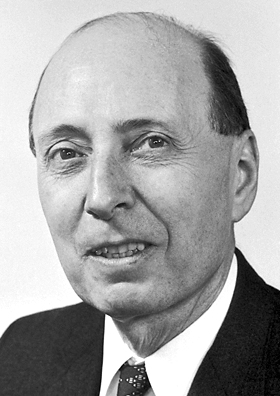Eugene Wigner (1902-1995) was a Hungarian-American theoretical physicist and mathematician and 1963 Nobel Prize winner in Physics.
Wigner played a key role in the early stages of the Manhattan Project. He, Leo Szilard, and Edward Teller collaborated with Albert Einstein on the 1939 Einstein-Szilard letter to President Roosevelt. During the Manhattan Project, Wigner led a group responsible for the design of the production nuclear reactors that would convert uranium into weapons grade plutonium. He was present when Chicago Pile One went critical on December 2, 1942. Wigner continued working at the Met Lab in Chicago through 1945.
Early Life
Wigner was born in Budapest, Hungary to middle class Jewish parents. Wigner developed an interest in science and math at a young age, and he enrolled at the Technische Hochschule in Berlin in 1921 to study chemical engineering. He worked with the Kaiser Wilhelm Institute beginning in 1927, working on x-ray crystallography. In the late 1930s, Wigner extended his research into atomic nuclei. He gained a greater interest in physics and was invited to be a visiting professor at Princeton for five years.
Later Years
In 1946, Wigner became Director of Research and Development at Clinton Laboratories in Oak Ridge. He later returned to Princeton and served on many government bodies over the next two decades, contributing to science, research, and civil defense. In 1963, Wigner won the Nobel Prize in Physics “for his contributions to the theory of the atomic nucleus and the elementary particles, particularly through the discovery and application of fundamental symmetry principles.”





